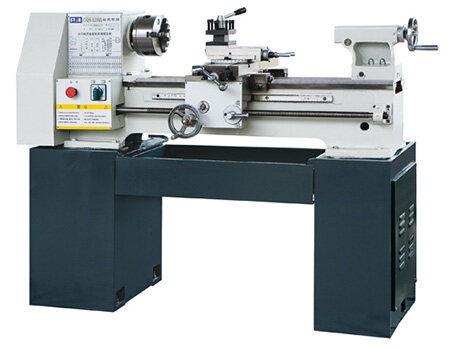E-postformatfeil
emailCannotEmpty
emailDoesExist
pwdLetterLimtTip
inconsistentPwd
pwdLetterLimtTip
inconsistentPwd

Nyheter
Basic Process of Machining Parts with CNC Lathe
CNC machine tools can better solve complex, precise, small-batch, changeable parts processing problems. It is a flexible and efficient automatic machine tool. The following is a brief introduction to the basic process of CNC lathe parts processing:

- Rational selection of machine tools
The main factors considered when machining parts on CNC machine tools are the material and grade of workpiece blank, the complexity of part contour shape, size, machining accuracy, part quantity, and heat treatment requirements. When selecting machine tools, we should not only ensure the technical requirements of processing parts but also improve efficiency.
- Process analysis of parts processed by CNC lathe
The technical analysis of CNC lathe machining involves a wide range, and it is usually required that the dimension data on the part drawing conform to the principle of convenient programming. The dimensioning method on the part drawing should adapt to the characteristics of CNC machining. In the drawing of parts processed by CN lathe C, the dimensions should be quoted on the same data, or the coordinate dimensions should be given directly, and the conditions of the geometric elements constituting the contour of the parts should be sufficient. The structural manufacturability of machined parts shall conform to the characteristics of CNC lathe processing. This annotation method is not only convenient for programming but also convenient for the coordination between dimensions and improving efficiency.
- Selection of processing method
The selection principle of the machining method is to ensure the machining accuracy and surface roughness of the machined surface. Generally, there are many processing methods to obtain the same level of accuracy and surface roughness, so the shape, size, and heat treatment requirements of parts need to be comprehensively considered in the actual selection. In addition, actual conditions such as productivity, economic requirements, and production equipment should also be considered.
- Principles for determining processing scheme
The machining of relatively precise surfaces on parts is often realized gradually through rough machining, semi-precision machining, and precision machining. For these surfaces, it is not enough to choose the corresponding final processing method only according to the quality requirements, but also to correctly determine the processing scheme from blank to final shape. When determining the processing scheme, the processing method required to meet these requirements should be preliminarily determined according to the requirements for the accuracy and surface roughness of the main surface.
- Division of process steps
The process of machining parts on CNC machine tools can be relatively centralized, and most or all processes can be completed in one clamping as far as possible. First, according to the part drawing, consider whether the processed parts can be processed on the CNC machine tool. If not, it should be decided which part is processed on the CNC machine tool and which part is processed on other machine tools. That is to divide the processing procedures of parts.
- Part installation and fixture selection
The installation of parts shall strive to unify the basis of design, process, and programming calculation, and avoid manual adjustment and processing schemes. As efficient as possible, all surfaces to be machined are machined after one-time positioning and clamping. Ensure that the coordinate direction of the fixture is relatively fixed with the coordinate direction of the machine tool, and the parts on the fixture should not interfere with the machining of the part surface by the machine tool. That is, the fixture should be opened for positioning, and the clamping mechanism components should not affect the tool (such as collision, etc.) during the processing process.
- Selection of cutting tools and determination of cutting the amount
The selection of cutting tools is one of the important factors in the process of NC machining. It not only affects the machining efficiency of machine tools but also directly affects the machining quality. When programming, the selection of cutting tools usually takes into account the processing capacity of the machine tool, the content of the process, the material of the workpiece, and other factors. Cutting amount includes spindle speed (cutting speed), back cutting amount, and feed rate.
- Selection of cutting oil
Cutting oil plays a role in protecting tools and improving machining efficiency in the whole machining process. When selecting cutting oil, it is usually necessary to decide which cutting oil to use according to the material of the workpiece, the type of equipment, the process method, the performance of the tool, and other factors. In addition to the above direct factors, it is also required that other properties of the cutting oil meet the requirements, such as oxidation resistance, rust prevention, cooling performance, etc.
- Determination of processing route
In NC machining, the path of tool position relative to workpiece motion is called the machining route, which requires high positioning accuracy and a fast positioning process. In addition, the axial movement dimension of the tool should also be determined, which is mainly determined by the hole depth of the machined part, but some auxiliary dimensions should also be considered, such as the lead-in distance and overtravel of the tool.
Make a purchase of casting machine parts, centrifugal casting machine parts, parts machining service from China, you can get them at a good price if you have a large quantity. We hope to be your long-term partner.

